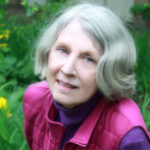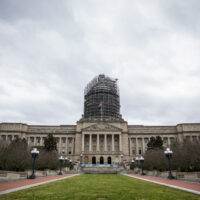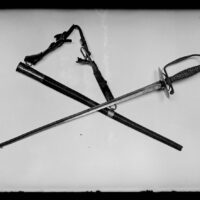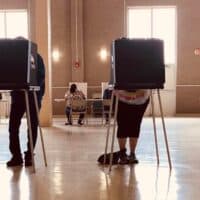Reading may unite us, but there are an increasing number of folks who believe literature is dangerous and books should be banned, which is, I suppose, a good reason for observing Banned Books Week in mid-September every year.
A case from my own history occurred in my first job out of college, teaching seventh grade language arts and social studies at a junior high school in New Jersey. Integrating literature into our study of the American Revolution, I included a poem about William Dawes, an obscure shoemaker who rode with the same mission as Paul Revere, the night of April 18, 1775, to warn Samuel Adams, John Hancock, and other patriots that the British were heading toward Lexington, Massachusetts, to arrest them.
In actuality, Paul Revere, William Dawes, and Samuel Prescott, along with 40 other men on horseback, spread the word about the oncoming Red Coats. Temporarily detained by the Brits, Revere never actually reached Concord, and Dawes lost his way after falling off his horse. The only one to alert Concord residents of the imminent Brit arrival was Prescott, a young physician who died in the Revolution a few years later.

Despite evidence to the contrary, the irate father left still convinced he was absolutely right, and I left public school teaching for a job with AT&T.
After using the poem with my seventh graders to spark discussion of the reliable and unreliable ways we learn history, I was accosted by a parent who questioned my patriotism because “everyone knows” Paul Revere was the hero of the midnight ride of April 18, 1775. To assuage his ire and save my job, I presented accurate information and careful documentation, tactfully pointing out that the reason so many believe Revere was man of the hour was because of the ever-popular Henry Wadsworth Longfellow poem, “Paul Revere’s Ride.”
So, pity the poor English teachers of today, as they contend with fears that fan the fires of censorship and book banning. The public is watching and waiting to pounce on the teacher if a whisper of sex, gender, race, religion and any other thorny topic emerges in the classroom.
“Controversy pops up with almost any title,” 10th grade English teacher T.J. VanDyke said, after attending a recent workshop at Murray State University on dealing with controversial topics in the English classroom.
Despite the inherent risks, VanDyke asserted, “But I like to find reading that holds students’ attention because I want them to compare and discuss.”
He mentioned a popular title, “The Hate U Give,” as one with potential appeal to his students in Dyersburg, Tennessee.
“I hope to put it into rotation,” he said, referring to the process teachers must follow to secure permission for including a book that is read in English classes.
The controversial novel by Angie Thomas shows up on many lists of banned books because of profanity, violence, and the perception of some who insist it promotes anti-law enforcement sentiments.
VanDyke added, “In my district, we’re blessed to teach some things not allowed to be taught in other places.”
He mentioned “To Kill a Mockingbird” specifically.
“A lot of districts block it because they think it’s offensive, but not if it’s taught in the right way,” he declared.
Attending the same MSU workshop as VanDyke, Amara Stroud, a high school English teacher from Muhlenburg County, found the sessions facilitated by English professors helpful and encouraging.
“I learned not to be scared of teaching controversial texts,” she said. “I just need to make sure that what I am implementing is worthwhile.”
She explained that her lesson plans for the next two weeks were devoted to the Harlem Renaissance, which obviously contains racial content. “So the students need to understand why it is worthwhile to study,” Stroud explained.
Courting controversy is an inherent component of teaching literature to young people, she added, but claimed that the challenges “remind me of why I’m a teacher.“
MSU’s Dr. Shimikqua Ellis reflected on her eight years of teaching English in middle and high school and explained how that experience led her to a doctorate and her job at Murray, where she teaches future teachers of English. She quoted award-winning writer Ta-Nehisi Coates who said, “English teachers should be librarians of justice, hope, and consciousness. English classrooms should provide something more complex than grammar, something deeper than the classics, and something much more meaningful than writing between the lines”
She further defined three ways books can function in the classroom: As mirrors that allow us to see ourselves; as windows through which to view different experiences; and as sliding glass doors that open up to a different place.
“The standard curriculum,” she said, “does not meet these expectations.”
According to the ALA, frequently banned classics include:
- “To Kill a Mockingbird,” by Harper Lee
- “The Catcher in the Rye,” by JD Salinger
- “The Grapes of Wrath,” by John Steinbeck
- “The Color Purple,” by Alice Walker
- “1984,” by George Orwell
- “Brave New World,” by Aldous Huxley
- “Native Son,” by Richard Wright
- “Slaughterhouse-Five,” by Kurt Vonnegut
- “A Separate Peace,” by John Knowles
- “The Lord of the Flies,” by William Golding
A recent analysis by PEN America found that many challenged books focus on communities of color, the history of racism in America and LGBTQ characters. In fact, one in three books restricted by school districts in the past year featured LGBTQ themes or characters.
Here are the 10 most challenged books of 2021, according to the ALA:
- 1. “Gender Queer,” by Maia Kobabe
- 2. “Lawn Boy,” by Jonathan Evison
- 3. “All Boys Aren’t Blue,” by George M. Johnson
- 4. “Out of Darkness,” by Ashley Hope Perez
- 5. “The Hate U Give,” by Angie Thomas
- 6. “The Absolutely True Diary of a Part-Time Indian,” by Sherman Alexie
- 7. “Me and Earl and the Dying Girl,” by Jesse Andrews
- 8. “The Bluest Eye,” by Toni Morrison
- 9. “This Book Is Gay,” by Juno Dawson
- 10. “Beyond Magenta,” by Susan Kuklin
The irony is, of course, that banning a book can raise its appeal to young readers. A recent New York Times article lists banned books that kids should read, including beloved author Judy Blume’s, “Are You There God? It’s Me, Margaret.”
One way of celebrating Banned Books Week is to partake of the forbidden literary fruit and find what all the fuss is about. Which ones unite us, and which ones divide?
Constance Alexander is a columnist, award-winning poet and playwright, and President of INTEXCommunications in Murray. She is a board member for Hoptown Chronicle.






